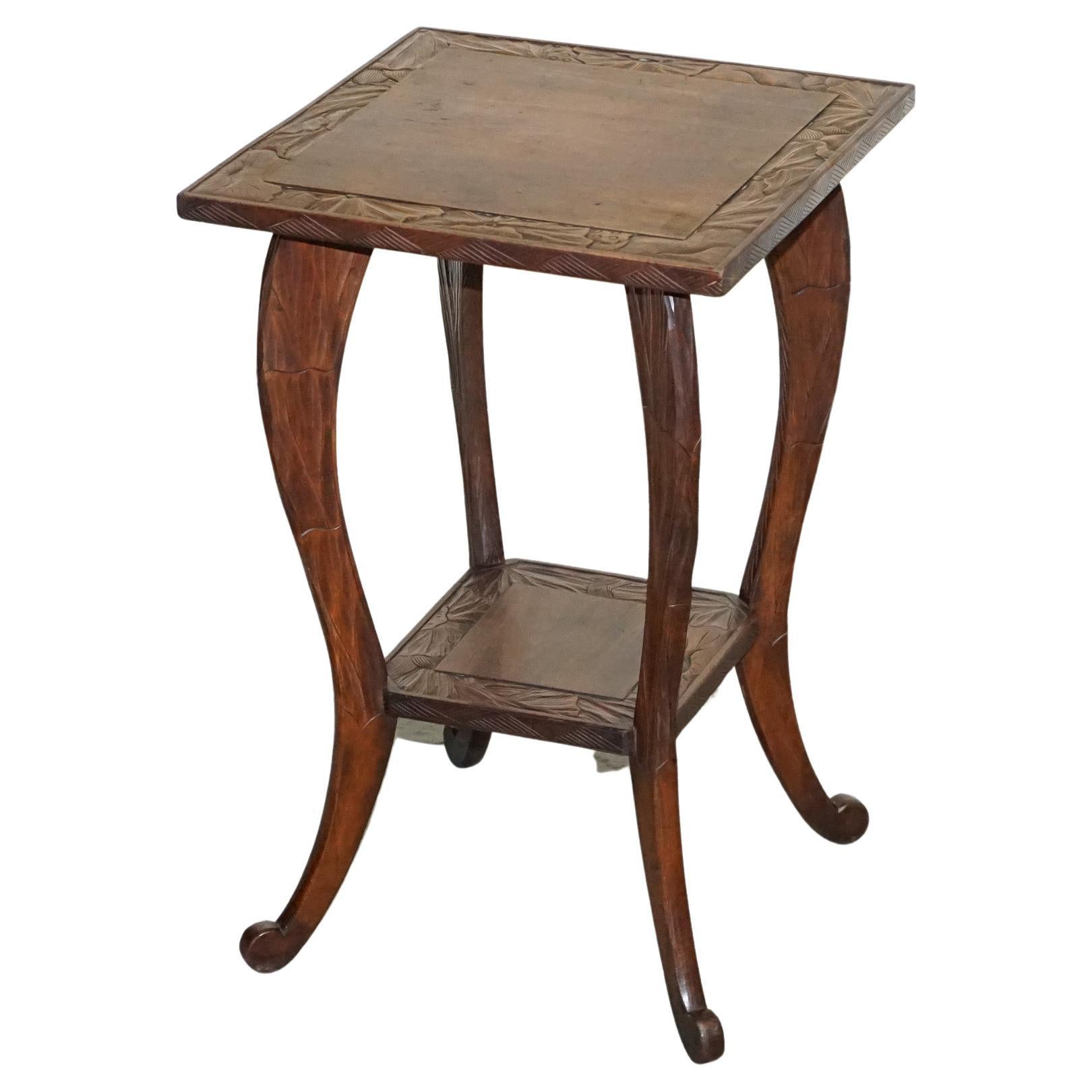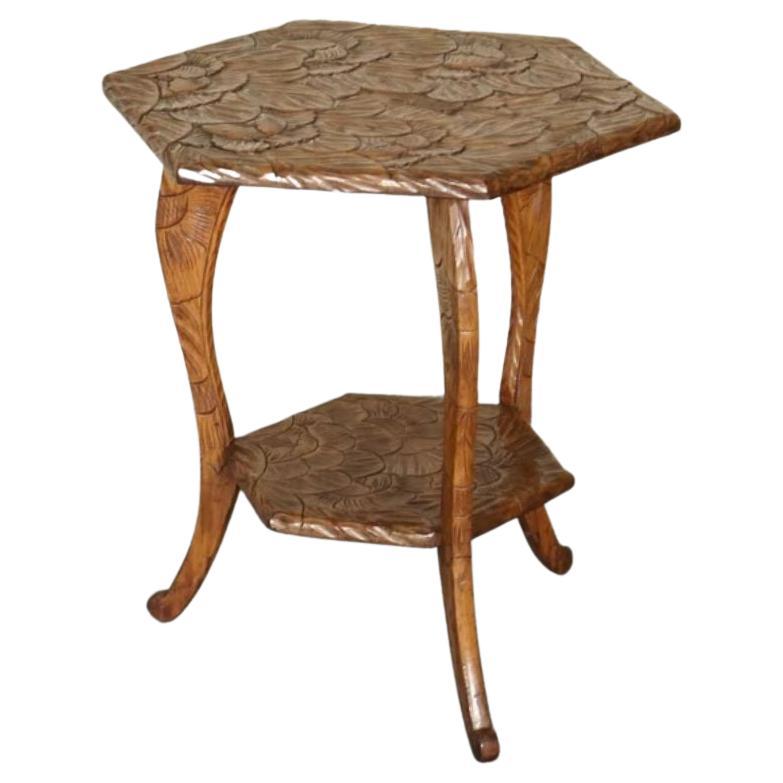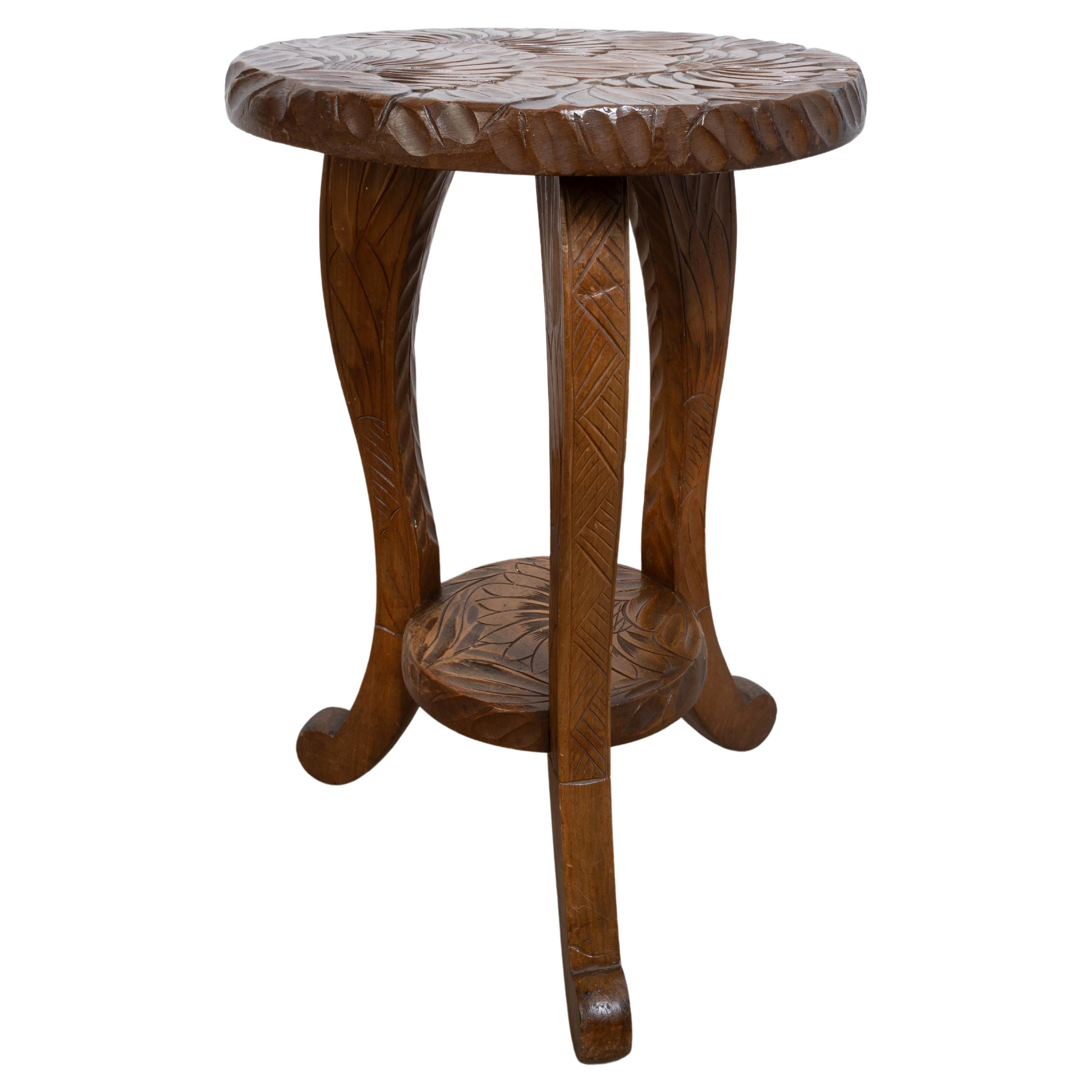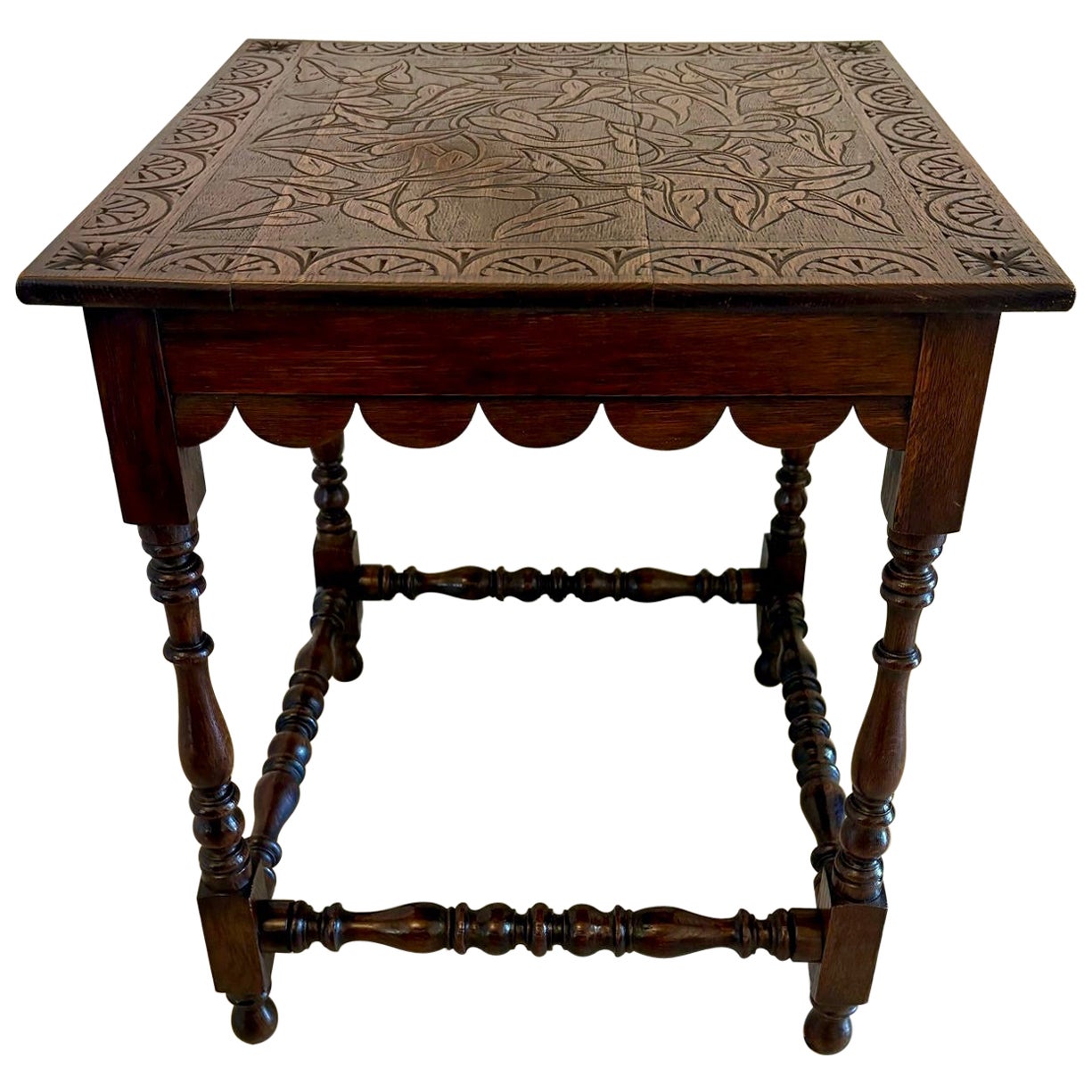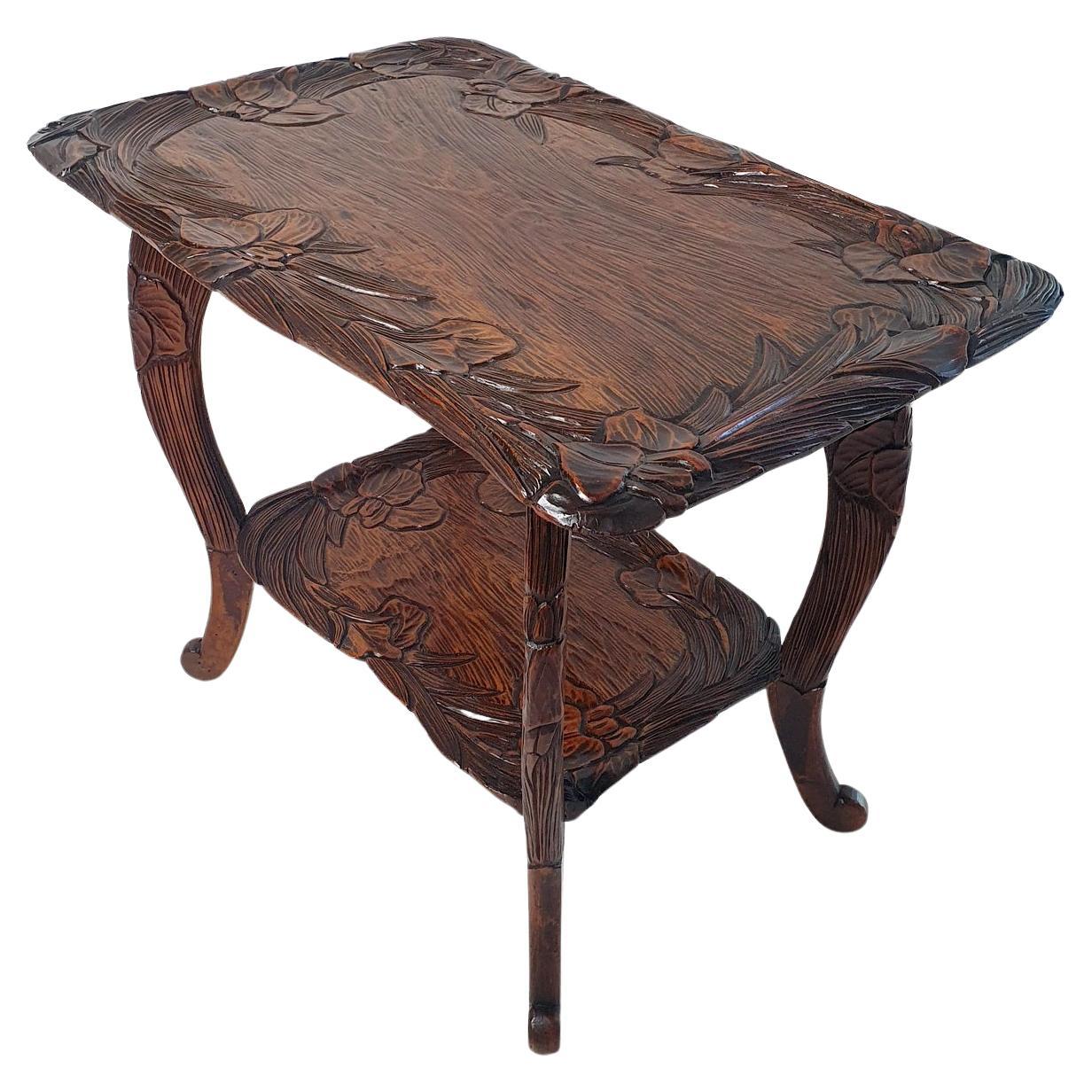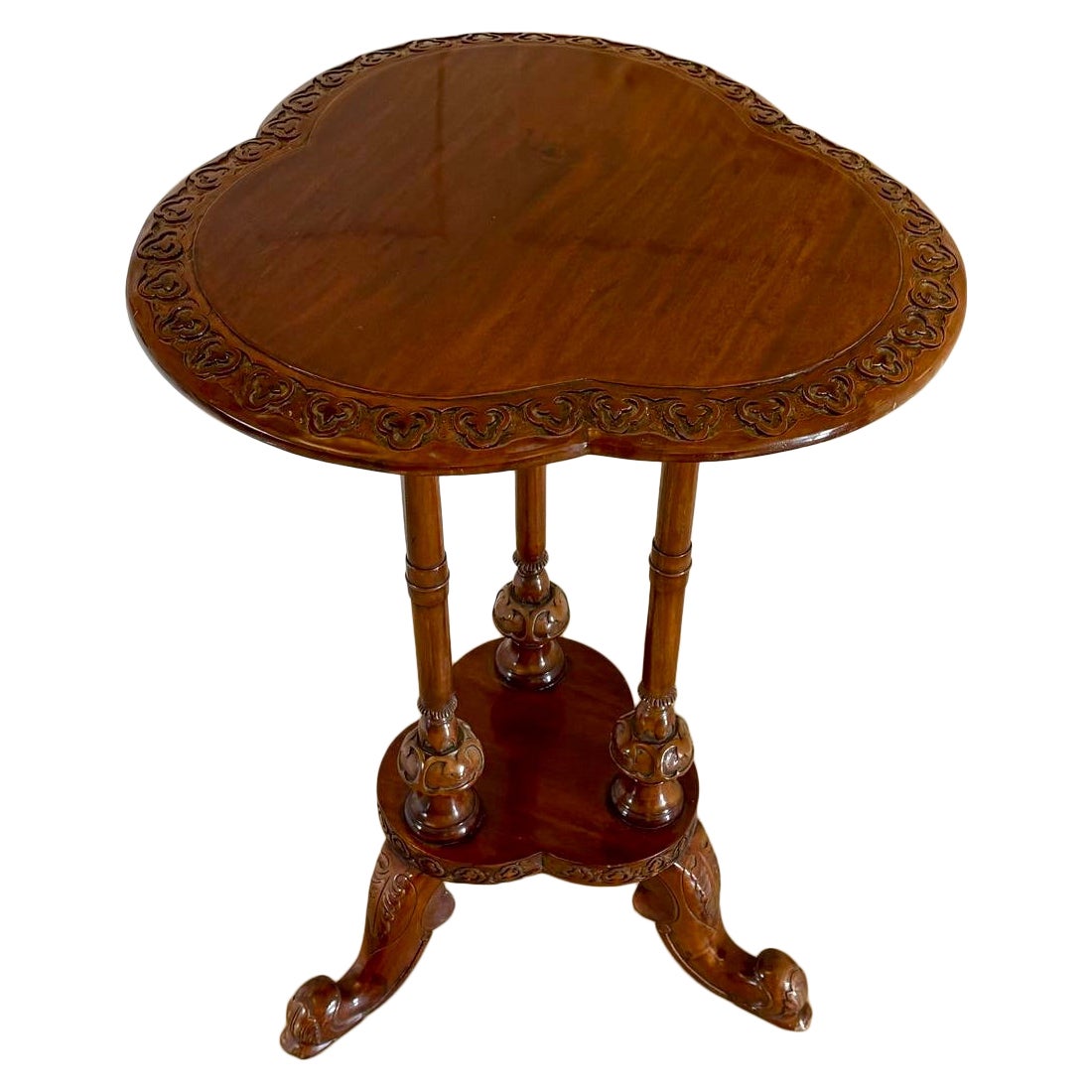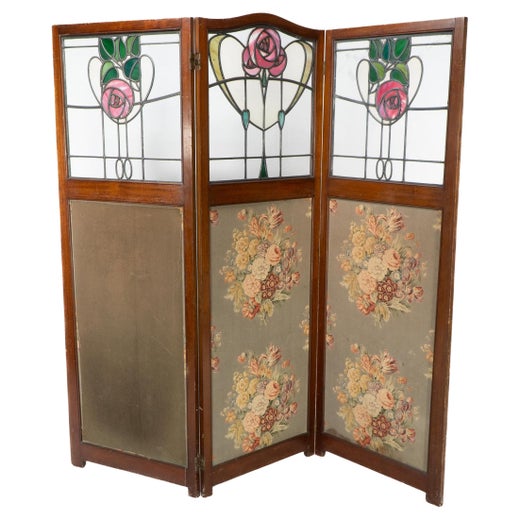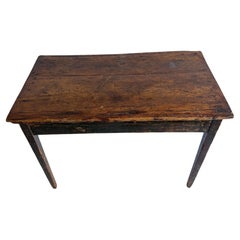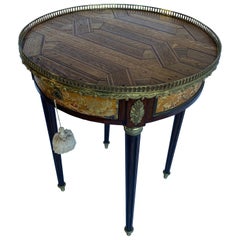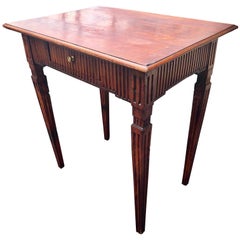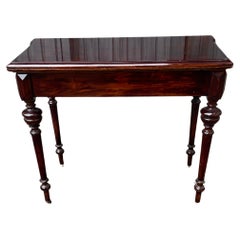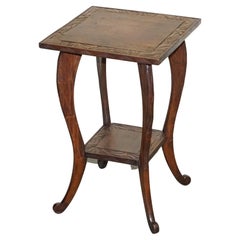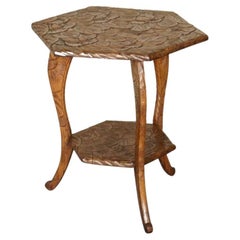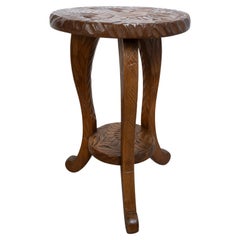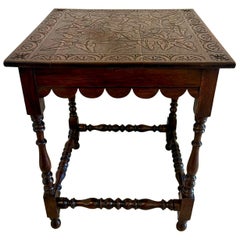Hand Carved Occasional Side End Lamp Table, 1905 Liberty's London
About the Item
- Creator:Liberty & Co. (Fashion House)
- Dimensions:Height: 20.87 in (53 cm)Width: 16.93 in (43 cm)Depth: 16.93 in (43 cm)
- Style:Folk Art (Of the Period)
- Materials and Techniques:
- Place of Origin:
- Period:1900-1909
- Date of Manufacture:1905
- Condition:Repaired: One leg has been glued at the lower level shelf. Repair can be seen on the detailed image included. Table is good sturdy order, unaffected by the repair. Wear consistent with age and use. Minor structural damages.
- Seller Location:Haddonfield, NJ
- Reference Number:Seller: 353371stDibs: LU943431502582
Liberty & Co.
Long before Liberty became one of London’s most iconic luxury department stores, shoppers of the late 19th century knew it as Liberty & Co. — purveyors of fine silverware designed in the Art Nouveau style, Arts and Crafts-style furniture and an eclectic assortment of ornaments, fabrics, fashion and other goods from around the world.
British merchant Arthur Lasenby Liberty founded Liberty & Co. in 1875. Liberty dreamed of selling an assortment of fine wares he obtained in the Far East from a ship docked in the middle of one of London’s busiest shopping thoroughfares. However, he could only manage to borrow £2,000 from his father-in-law, so he settled for a small shop on Regent Street.
What began as a modest business grew exponentially over the next few years, and, by 1890, Liberty & Co. occupied most of Regent Street. Meanwhile, Liberty forged relationships with many British Art Nouveau artists and designers who were keen to work with one of the most prestigious retailers in London.
In 1899, Liberty & Co. hosted an exhibition showcasing a collection of silver pieces designed by notable silversmiths like Oliver Barker, Albert Edward Jones and Bernard Cuzner. A line of silverware called Cymric also debuted and was produced in partnership with silversmith W. H. Haseler of Birmingham and Liberty & Co.’s chief designer, Manx artist Archibald Knox. The innovative Cymric collection featured a blend of Art Nouveau with traditional Celtic style, including such pieces as candlesticks, spoons, bowls, tableware and jewelry.
Liberty & Co. also had a furniture workshop in Archway, London, run by Lawrence Turner and which employed carpenters to produce handcrafted, Arts and Crafts-style armchairs, stools, bookcases, cabinets, side tables and other furniture. Most of these high-quality and durable pieces were made of solid wood such as oak, mahogany and walnut. In addition to their own in-house creations, Liberty & Co. also sold furniture by other designers, including chairs by German architect Richard Riemerschmid.
Liberty died in 1917, and Liberty & Co. became Liberty of London after relocating to their iconic location on Great Marlborough Street in 1924. Ironically, the imposing Tudor Revival building is constructed from the timbers of two decommissioned British Navy ships — realizing Liberty’s original “ship-store” dream.
On 1stDibs, discover a range of antique and vintage Liberty & Co. serveware, seating and decorative objects.
- ShippingRetrieving quote...Shipping from: Copenhagen, Denmark
- Return Policy
More From This Seller
View AllAntique Early 19th Century Scandinavian Folk Art Desks and Writing Tables
Pine
Antique Late 18th Century French Louis XVI Side Tables
Bronze, Brass
Antique Late 18th Century French Louis XVI End Tables
Brass
Antique Late 19th Century Swedish Biedermeier Game Tables
Mahogany
Vintage 1930s French Art Deco Side Tables
Marble
Early 20th Century French Baroque Tables
Wood
You May Also Like
20th Century British Side Tables
Oak
Antique Early 19th Century British Edwardian Side Tables
Hardwood
Antique Early 1900s Japanese Japonisme End Tables
Fruitwood
Antique 19th Century English Victorian Side Tables
Oak
Vintage 1910s Japanese Art Nouveau Side Tables
Fruitwood
Early 20th Century English Edwardian Side Tables
Other
